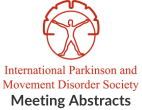Randomized, waitlist-controlled trial of Karate Intervention to Change Kinematic Outcomes in PD (KICK OUT PD)
Objective: To test the adherence to and efficacy of twice-weekly karate classes for people with mild to moderate Parkinson’s Disease (PD) on quality of life…Pallidal or subthalamic DBS for advanced Parkinson’s disease in the era of high-resolution MRI
Objective: We aimed to assess outcome of GPi-DBS and STN-DBS implanted based on high-resolution MRI. Background: Both GPi-DBS and STN-DBS are effective for treatment of…Associations between non-motor symptoms and patient characteristics in Parkinson’s disease: A multicenter cross-sectional study
Objective: We aimed to investigate factors associated with non-motor symptoms (NMS) in Parkinson's disease (PD). Background: PD is characterized by a variety of NMS, such…Analysis of the therapeutic potential of IkT-148009 in Parkinson’s disease
Objective: To evaluate the therapeutic potential of the selective, brain penetrant c-Abl inhibitor IkT-148009 in mouse models of progressive PD and the safety and tolerability…Factors affecting adaptive deep brain stimulation (aDBS) indications in Parkinson’s disease
Objective: We investigated the factors affecting the indications and effectiveness of aDBS based on the correlation between self-recorded on/off-state and beta oscillations in Parkinson's disease…Is there a common structural network for stimulation-induced dysarthria in subthalamic and thalamic deep brain stimulation?
Objective: To identify a common structural network for stimulation-induced dysarthria (SID) in thalamic deep brain stimulation (DBS) and DBS of the Nucleus subthalamicus (STN). Background:…Differential Rab10 & Rab8A phosphorylation by LRRK2 variants G2019S & I1371V manifests differences in membrane fluidity & pathogenicity.
Objective: To evaluate the difference in substrate (Rab8A & Rab10) phosphorylation by LRRK2 variants G2019S & I1371V on membrane fluidity & pathogenicity. Background: LRRK2 is…Clinical severity in Parkinson’s disease is determined by decline in cortical compensation
Objective: We tested whether inter- and intra-individual differences in clinical severity are determined by cortical compensation, and not just by basal ganglia dysfunction. Background: Motor…Turning 360 degrees in standing – associations with perceived walking difficulties and comfortable gait speed in people with drug naïve/early Parkinson’s disease.
Objective: To investigate how turning performance (360 degrees in standing) is associated with perceived walking difficulties and comfortable gait speed in people with drug naïve…Comparision of objective Parkinson’s disease monitoring systems and the interpretations of results
Objective: To examine the agreeement between two objective Parkinson’s disease (PD) monitoring systems (PKG and STAT-ON) and clinical information from a resident physician’s interview or…
- « Previous Page
- 1
- …
- 130
- 131
- 132
- 133
- 134
- …
- 338
- Next Page »
